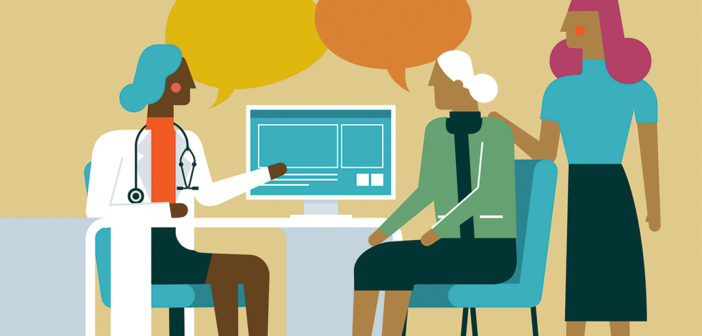Med students formalize their training as bilingual providers.
At 14 years old, Yokarla Veras MD’20 ScM’20 was responsible for interpreting whenever her mother went to a doctor’s appointment. Growing up as a bilingual Spanish speaker, she translated difficult medical terms and personal clinical encounters for her family.
Pranav Aurora MD’20 ScM’20 witnessed a similar challenge when his grandmother was hospitalized after a stroke and his father had to interpret everything the physician said. “It struck me that my grandmother could never fully express herself to her doctors,” Aurora says. “Her questions and worries were always relayed to the medical team through my dad.”
Language barriers can lead to more anxiety for patients and a lower standard of care, according to a study by Associate Dean for Diversity and Multicultural Affairs Joseph Diaz MD’96 RES’99 F’01 MPH’09. He found that patients in Rhode Island with limited English proficiency often lacked access to interpreters, feared disclosing limited English skills, and had providers who overestimated their understanding of English.
Training medical students to be multilingual health care providers is one way to facilitate better, more comprehensive physician-patient interactions and ultimately build a more just health care system. But without the right training, they can struggle to meet the needs of patients with limited English proficiency.
“Students who have had only a few years of language learning are being asked to jump into [patient]encounters and relay patients’ stories to the other providers on their medical team,” Michael Broder MD’20 ScM’20 says.
But even someone with conversational fluency may find their ability to convey health-related information challenging.
Veras, Aurora, and Broder, who are all fluent in Spanish, came together in a Primary Care-Population Medicine Program leadership course to create a solution: a formalized certification process for medical students to be trained and recognized as bilingual providers.
To achieve certification, all students identified as advanced Spanish speakers must meet with a faculty adviser who evaluates their language skills and determines their preparedness to take a nationally recognized certification test accepted by the Lifespan health system. Once certified, Lifespan gives them a special badge identifying them as a “Bilingual Medical Student.”
So far, 14 students have passed the certification exam and, thanks to a generous gift from Pedro Escobar-Rodriguez EMHL’18, MD, a second cohort will be taking the test.
Veras, Aurora, and Broder, with support from Associate Dean for Medical Education Paul George ’01 MD’05 RES’08 and Clinical Assistant Professor of Medicine Martha Sanchez, MD, are already seeking to grow the program. “Eventually, we envision expanding this program to include students with knowledge of different languages, so that a large chunk of Brown medical grads will be prepared to enter a workforce that has a need for multilingual providers,” Broder says.
“We have an opportunity to use our skills as clinicians in new, creative ways for patients of all backgrounds,” Aurora says.




